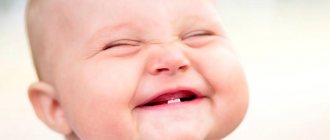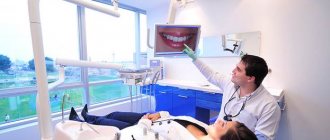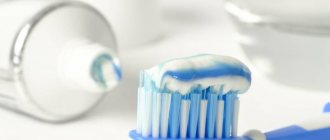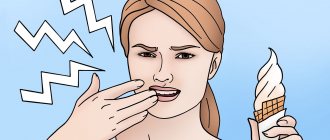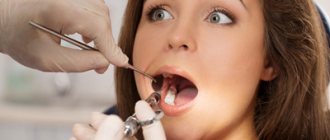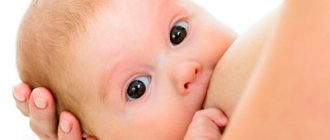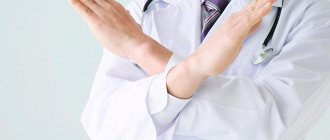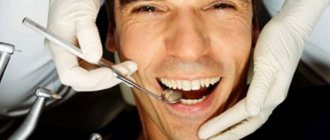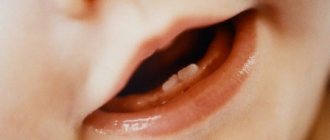Social tax deduction for dental treatment is an amount of money that a patient of a dental clinic can return by contacting the tax office and providing documents confirming the costs of dental procedures. Like any other tax deduction, the amount is equal to 13% of all paid procedures.
What documents to prepare in order to return 13% of the amount of dental treatment, what types of procedures are suitable for the rules of social deduction and whether it is possible to issue a refund of part of the funds to a child or a pensioner - read in this article.
Who is eligible for a tax deduction?
who pay income tax have the right to such social benefits . Every citizen who is officially employed and receives a white salary pays 13% income tax on his earnings.
You can get a tax refund for dental treatment:
- If you pay for dental services to treat your own teeth yourself .
- If you pay for dental services for your close relatives, namely: parents, spouse or children .
- If you purchased medications for treatment at the clinic yourself.
- If you purchased VHI insurance and are receiving dental treatment under it.
Compensation is not due to people with unofficial income (employment without an entry in the work book, self-employment), the unemployed, non-working pensioners, students and minors.
What dental services are tax deductible?
Any dental services give you the right to return a tax deduction if:
- The clinic where the treatment took place is licensed.
- Payment for the procedure was made at one's own expense or at the expense of close relatives (and not through employer subsidies).
- This year you received income on which income tax was paid at 13% of wages.
Tax deduction code
You need to fill out a 3-NDFL tax return and indicate the deduction code that you are going to receive. In this case, the required code is 324.
What do you need to receive?
- passport;
- certificate 2-NDFL;
- declaration 3-NDFL for the year in which you paid for the dental treatment procedure;
- application for a tax deduction using a special form (request from the tax office);
- a receipt from the dental clinic or other documents confirming the receipt of dental procedures and payment for them;
- a copy of the agreement with the dental clinic;
- a copy of the clinic's license.
It is important that all manipulations take place in a licensed Russian dental clinic. Whether it is state-owned or commercial, it doesn’t matter. It is not necessary to bring original documents - copies will also be sufficient grounds for receiving a tax benefit.
If some documents reflect important information from other documents, then they can be used in both cases. For example, it is not necessary to look for a copy of the clinic's license if this information is reflected in the contract with this medical institution.
The necessary conditions
Citizens of the Russian Federation have the right to NV for dental implantation in the following cases:
- If they receive income , they are subject to the standard 3 percent tax.
- Used the service in a clinic located on the territory of the Russian Federation and having a license for this type of service (with the exception of medical institutions in Crimea and Sevastopol).
- They paid for the service with their own personal funds , and have certificates confirming this.
NV for dental implantation is not available to the following citizens:
- pensioners who have not had labor income for the last 3 years and, accordingly, have not paid pension benefits (pensions in the Russian Federation are not subject to taxation);
- individual entrepreneurs paying taxes under the simplified tax system and UTII schemes;
- unemployed;
- foreigners who are not residents of the Russian Federation (pay tax 30%, not 13%).
Features of the production of Astra Tech implants and all their advantages.
Come here to learn more about the purpose and design features of ball-shaped abutments.
At this address https://www.vash-dentist.ru/implantatsiya/metodiki/vremennyiy-abatment.html we will talk about the importance of installing a temporary abutment and the price of this element.
Sum
The difference between the tax actually paid and the same tax with recalculation will be the amount of the refunded tax
The amount of tax deduction depends on several factors. The first of them is the employee’s salary, on which he pays taxes.
Only white, official income is taken into account. The second factor is the amount spent on treatment. Based on this, the amount of the refunded amount is calculated.
There is a limit on the amount of payment. The maximum tax deduction amount is RUB 15,600. per year with a total amount of medical services of 120,000 rubles.
Calculation example:
Let’s say a citizen with a salary of 30,000 rubles/month has had caries treatment at a dentist in the amount of 50,000 rubles.
Accordingly, for the year he will receive a salary of 30,000 * 12 = 360,000 rubles. and will pay taxes 360,000 * 13% = 46,800 rubles . – the tax refund cannot exceed this amount.
The deduction for dental procedures should be 50,000 * 13% = 6,500 rubles, i.e. a citizen can receive the money in full.
If the patient’s salary is less, for example, 5,000 rubles/month , and the amount of treatment is more (100,000 rubles), then the calculation is as follows. The patient's annual income is 60,000 rubles. Taxes paid on it amounted to 7,800 rubles .
The amount of the expected return is 13,000 rubles. But the state cannot return more taxes than paid, so the patient will only receive back 7,800 rubles.
If more than 120,000 rubles were spent on treatment or dental prosthetics, then regardless of the size of the salary, the deduction will be no more than 15,600 rubles.
Income tax refund for medical services in 2021 - 2021
Section 1. ANESTHETICS AND MUSCLE RELAXANTS
Anesthetics
Halothane (inhalation anesthesia solution in vials) Hexobarbital (powder for injection) Dinitrogen oxide (gas in cylinders) Ketamine (injection solution) Sodium oxybate (injection solution) Sodium thiopental (lyophilized powder for injection) Diethyl ether (liquid in vials)
Local anesthetics
Bupivacaine (injection) Lidocaine (aerosol, injection, gel, capsule solution, eye drops)
Muscle relaxants
Atracurium besylate (injection solution) Botulinum toxin, albumin (lyophilized powder for injection) Vecuronium bromide (injection powder) Pipecuronium bromide (injection powder) Suxamethonium bromide (powder)
Section 2. ANALGESICS, NON-STEROID ANTI -INFLAMMATORY DRUGS, DRUGS FOR THE TREATMENT OF RHEUMATIC DISEASES AND GOUT
Narcotic analgesics
Morphine (injection, tablets) Morphine + narcotine + papaverine + codeine + thebaine (injection) Pentazocine (injection, tablets) Pyritramide (injection) Trimeperidine hydrochloride (injection, tablets) Fentanyl (injection) )
Non-narcotic analgesics and non-steroidal anti-inflammatory drugs
Acetylsalicylic acid (tablets) Diclofenac sodium (tablets, dragees, injection solution, suppositories, gel, eye drops) Ibuprofen (capsules, tablets, syrup, cream) Ketoprofen (tablets, capsules, suppositories, gel, powder for solution) Lornoxicam (tablets , lyophilized powder for the preparation of injection solution) Meloxicam (tablets, suppositories) Nalbuphine (injection solution) Tramadol (injection solution, capsules, tablets, oral drops, suppositories)
Medicines for the treatment of gout
Allopurinol (tablets)
Other means
Colchicine (tablets, dragees) Penicillamine (tablets, capsules, dragees)
Section 3. DRUGS USED FOR THE TREATMENT OF ALLERGIC REACTIONS
Antihistamines
Quifenadine (tablets) Ketotifen (tablets, capsules, syrup) Chloropyramine (tablets, injection solution)
Section 4. DRUGS AFFECTING THE CENTRAL NERVOUS SYSTEM
Anticonvulsants
Valproic acid (tablets, capsules, syrup, dragees, suspension, drops) Carbamazepine (tablets) Clonazepam (tablets, drops, solution for injection) Lamotrigine (tablets) Phenytoin (tablets) Phenobarbital (tablets, oral solution) Ethosuximide (capsules)
Drugs for the treatment of parkinsonism
Amantadine (tablets, solution for injection) Biperiden (tablets, solution for injection) Levodopa + benserazide (capsules) Levodopa + carbidopa (tablets) Trihexyphenidyl (tablets)
Sedatives and anxiolytics, drugs for the treatment of psychotic disorders
Haloperidol (tablets, injection solution) Diazepam (tablets, injection solution, suppositories) Zuclopenthixol (tablets, injection solution) Clozapine (tablets, injection solution) Levomepromazine (tablets, injection solution) Lorazepam (tablets) Medazepam (tablets, injection solution) granules, capsules) Nitrazepam (tablets) Periciazine (drops, capsules) Perphenazine (tablets) Pipothiazine (injection solution, drops) Sulpiride (tablets, injection solution, capsules, oral solution) Thioproperazine (tablets, injection solution) Thioridazine (tablets, dragees) Trifluoperazine (tablets, solution for injection) Phenazepam (tablets, solution for injection) Fluspirilene (solution for injection) Fluphenazine (solution for injection) Chlorpromazine (tablets, solution for injection, dragee) Chlorprothixene (tablets)
Antidepressants and mood stabilizers
Amitriptyline (tablets, injection, dragees) Imipramine (tablets, dragees, injection) Clomipramine (tablets, dragees, injection) Lithium carbonate (tablets, capsules) Maprotiline (tablets, dragees, injection) Mianserin (tablets) ) Moclobemide (tablets) Sertraline (tablets) Tianeptine (tablets) Fluoxetine (tablets, capsules) Citalopram (tablets)
Medicines for the treatment of sleep disorders
Zolpidem (tablets)
Medicines for the treatment of multiple sclerosis
Glatiramer acetate (lyophilized powder for injection) Interferon beta (lyophilized powder for injection)
Means for the treatment of alcoholism and drug addiction
Naloxone (injection solution) Naltrexone (tablets, capsules)
Anticholinesterase drugs
Distigmine bromide (tablets, solution for injection) Neostigmine methyl sulfate (tablets, solution for injection) Pyridostigmine bromide (tablets, dragees, solution for injection)
Other drugs affecting the central nervous system
Vinpocetine (tablets, solution for injection) Hexobendine + etamivan + etophylline (tablets, solution for injection) Nimodipine (tablets, solution for infusion)
Section 5. DRUGS FOR PREVENTION AND TREATMENT OF INFECTIONS
Antibacterial
Azithromycin (tablets, powder, syrup) Amikacin (powder for injection, solution for injection) Amoxicillin + clavulanic acid (solution for injection) Ampicillin (tablets, capsules, powder for injection) Benzathine benzylpenicillin (powder for injection) Benzylpenicillin (powder for injection) Vancomycin (powder for injection) Gentamicin (ointment, cream, solution for injection, eye drops) Josamycin (tablets, suspension) Doxycycline (tablets, capsules, powder for injection) Imipenem (powder for injection) Carbenicillin (powder for injection) Clarithromycin (tablets) ) Co - trimoxazole (tablets, suspension, solution for injection) Lincomycin (capsules, ointment, solution for injection) Meropenem (powder for injection) Mesalazine (suspension) Mupirocid (ointment) Norfloxacin (tablets, eye drops) Pefloxacin (tablets, solution for injection) Spiramycin (tablets, granules for suspension) Sulfacetamide (eye drops) Chloramphenicol (tablets, capsules, powder for injection, eye drops) Cefaclor (capsules, granules, syrup, suspension) Cefaperazone (powder for injection) Cefipime (powder for injection) Cefotaxime (powder for injection) Ceftazidime (powder for injection) Ceftriaxone (powder for injection) Cefuroxime (powder for injection) Ciprofloxacin (tablets, injection solution, eye drops) Erythromycin (tablets, ointment, syrup, ampoules)
Antituberculosis drugs
Isoniazid (tablets, solution for injection) Lomefloxacin (tablets) Pyrazinamide (tablets) Prothionamide (tablets) Rifabutin (capsules) Rifampicin (capsules, powder for injection) Streptomycin (powder for injection) Ethambutol (tablets, dragees) Ethionamide (dragees)
Antiviral agents
Acyclovir (tablets, ointment, cream, powder for injection) Ganciclovir (capsules, powder for injection) Didanosine (tablets, powder for oral solution) Zidovudine (capsules, syrup, solution for injection) Indinavir (capsules) Ifavirenz (capsules) Lamivudine (tablets) , solution for internal use) Nevirapine (tablets, suspension) Stavudine (capsules, powder for oral solution)
Antifungal agents
Amphotericin B (ointment, powder for injection) Amphotericin B + methylglucamine (tablets) Griseofulvin (tablets, liniment, suspension) Itraconazole (capsules) Clotrimazole (vaginal tablets, cream, aerosol, solution) Terbinafine (tablets, cream) Fluconazole (capsules, solution for injection)
Antiprotozoal and antimalarial drugs
Hydroxychloroquine (tablets) Metronidazole (tablets, injection solution, suppositories) Chloroquine (tablets, injection solution)
Other means
Bifidumbacterin (tablets, powder for suspension)
Vaccines and serums
Immunobiological preparations (for the diagnosis and prevention of infectious diseases in accordance with the epidemiological situation in the constituent entities of the Russian Federation) Test system for the diagnosis of AIDS
Section 6. ANTI-TUMOR, IMMUNOSUPPRESSIVE AND RELATED DRUGS
Cytostatic agents
Azathioprine (tablets) Aranose (powder for injection) Asparaginase (powder for injection) Bleomycin (powder for injection) Busulfan (tablets) Vinblastine (lyophilized powder for injection) Vincristine (lyophilized powder for injection, solution for injection) Vinorelbine (solution for injection) Gemcitabin (lyophilized injection powder) hydroxicarbamide (capsules) dacarbazine (injection powder) dactinomycin (injection powder, injection solution) d, doxorubicin (powder for injections) docksel (concentrate for injection solution) Idarubicin (capsules, capsules) lyophilized powder for injection) Irinotecan (solution for infusion) Ifosfamide (powder for injection) Calcium folinate (solution for injection) Carboplatin (powder for injection, solution for injection) Carmustine (lyophilized powder) Clodronic acid (capsules, concentrate for preparation of infusion solution) Melphalan (tablets, powder for injection) Mercaptopurine (tablets) Methotrexate (tablets, powder for injection, solution for injection) Mitoxantrone (solution for injection, concentrate for infusion) Mitomycin (powder for injection) Oxaliplatin (powder for infusion) Paclitaxel ( solution for injection, concentrate for infusion) Procarbazine (capsules) Prospidium chloride (lyophilized powder, ointment) Thioguanine (tablets) Thiotepa (lyophilized powder for injection) Tretinoin (capsules) Fludarabine (powder for injection) Fluorouracil (solution for injection, concentrate for infusion ) Chlorambucil (tablets) Cyclophosphamide (tablets, dragees, injection) Cisplatin (lyophilized powder for injection, solution for injection) Cytarabine (powder for injection, solution for injection) Epirubicin (lyophilized powder for injection) Etoposide (injection)
Hormones and antihormones
(as amended by Decree of the Government of the Russian Federation dated June 26, 2007 N 411)
Aminoglutethimide (tablets) Anastrozole (tablets) Ganirelix (injection solution) Goserelin (depot capsules) Medroxyprogesterone (tablets, granules, injection suspensions) Tamoxifen (tablets) Triptorelin (injection solution, lyophilized powder for injection solution) Flutamide (tablets) ) Cetrorelix (lyophilized powder for the preparation of injection solution)
Related products
Interferon alfa (powder for injection, solution for injection, suppositories) Lenograstim (lyophilized powder for injection) Molgramostim (lyophilized powder for injection) Ondansetrion (tablets, solution for injection) Filgrastim (solution for injection)
Section 7. DRUGS FOR TREATMENT OF OSTEOPOROSIS
Osteogenesis stimulants
Alendronic acid (tablets) Alfacalcidol (capsules) Calcitonin (powder for injection) Calcium carbonate + ergocalciferol (tablets)
Section 8. DRUGS AFFECTING BLOOD
Antianemic drugs
Iron hydroxide sucrose complex (injection solution) Iron sulfate (tablets, dragees) Iron sulfate + ascorbic acid (tablets) Folic acid (tablets) Cyanocobalamin (injection solution) Epoetin beta (injection solution)
Drugs affecting the blood coagulation system
Alpostadil (powder for injection) Alteplase (lyophilized powder for injection) Heparin sodium (injection) Nadroparin calcium (syringes for injection) Pentoxifylline (tablets, injection) Protamine sulfate (injection) Streptokinase (powder) for injection) Ticlopidine (tablets) Phenindione (tablets) Enoxaparin sodium (syringes with solution for injection)
Solutions and plasma substitutes
Amino acids for parenteral nutrition (solution for parenteral nutrition) Hemin (concentrate for preparation of infusion solution) Dextrose (solution for injection, solution for infusion) Pentastarch (solution for infusion)
Plasma preparations
Albumin (solution for infusion) Coagulation factor VIII (powder for injection) Coagulation factor IX (powder for injection)
Lipid-lowering drugs
Simvastatin (tablets) Phospholipids + pyridoxine + nicotinic acid + adenosine monophosphate (injection solution)
Section 9. DRUGS AFFECTING THE CARDIOVASCULAR SYSTEM
Antianginal agents
Isosorbide dinitrate (tablets, capsules, injection solution, aerosol) Isosorbide mononitrate (tablets, capsules) Nitroglycerin (tablets, capsules, patch, injection solution)
Antiarrhythmic drugs
Allapinin (tablets, solution for injection) Amiodarone (tablets, solution for injection) Atenolol (tablets) Metoprolol (tablets) Procainamide (tablets, solution for injection) Propafenone (tablets) Quinidine (tablets) Ethacizine (tablets)
Antihypertensive drugs
Azamethonium bromide (injection solution) Amlodipine (tablets) Betaxolol (tablets, eye drops) Verapamil (tablets, capsules, dragees, injection solution) Doxazosin (tablets) Methyldopa (tablets) Nifedipine (tablets, capsules) Propranolol (tablets, solution for injection) injection) Fosinopril (tablets)
Medicines for the treatment of heart failure
Valsartan (tablets) Digoxin (tablets, drops, injection solution) Irbesartan (tablets) Captopril (tablets) Quinapril (tablets) Perindopril (tablets) Enalapril (tablets, injection solution)
Vasopressors
Dobutamine (lyophilized powder for injection, concentrate for infusion) Dopamine (solution for injection, concentrate for infusion) Phenylephrine (solution for injection, eye drops) Ephedrine (solution for injection)
Section 10. DIAGNOSTIC TOOLS
X-ray contrast agents
Sodium amidotrizoate (injection) Barium sulfate + sodium citrate + sorbitol + antifomsilane + nipagin (powder) Gadodiamide (injection) Gadopentetic acid (injection) Galactose (injection granules) Iohexol (injection) Yopromide (injection) for injection)
Fluorescent agents
Fluorescein sodium (solution for injection)
Radioisotope agents
Albumin microspheres, 99mTs (reagent for preparation, lyophilized powder for preparing a solution) Bromezide, 99Ts (reagent for preparation, lyophilized powder for preparing a solution) Pentatech, 99mTs (reagent for preparation, lyophilized powder for preparing a solution) Pirfotech, 99mTs (reagent for preparing , lyophilized powder for the preparation of a solution) Strontium 89 chloride isotonic solution (solution for injection) Technefit, 99Ts (reagent for preparation, lyophilized powder for preparation of a solution) Technefor, 99mTs (reagent for preparation, lyophilized powder for preparation of a solution)
Section 11. ANTISEPTICS AND DISINFECTIONS
Antiseptics
Iodine (alcohol solution)
Disinfectants
Hydrogen peroxide (solution) Chlorhexidine (solution) Ethanol (solution)
Section 12. DRUGS FOR THE TREATMENT OF DISEASES OF THE GASTROINTESTINAL TRACT
Antacids and other antiulcer drugs
Omeprazole (capsules) Pirenzepine (tablets, solution for injection) Famotidine (tablets, solution for injection)
Antispasmodics
Atropine (eye drops, solution for injection) Drotaverine (tablets, solution for injection) Platiphylline (solution for injection)
Pancreatic enzymes
Pancreatin (tablets, capsules, dragees)
Medicines for the treatment of liver failure
Artichoke leaf extract (tablets, syrup, injection solution) Lactulose (syrup)
Antienzymes
Aprotinin (lyophilized powder, solution for injection)
Section 13. HORMONES AND DRUGS AFFECTING THE ENDOCRINE SYSTEM
Non-sex hormones, synthetic substances and antihormones
Betamethasone (tablets, ointment, cream, drops, solution for injection) Bromocriptine (tablets, capsules) Hydrocortisone (lyophilized powder for injection, solution for intravenous injection, ointment, lotion) Chorionic gonadotropin (powder for injection) Deoxycortone (tablets) Dexamethasone (tablets) , eye drops, injection solution) Desmopressin (injection solution, drops) Dihydrotahysterol (capsules, powder for injection solution, drops) Clomiphene (tablets) Levothyroxine sodium (tablets) Levothyroxine + potassium iodide (tablets) Liothyronine + levothyroxine + potassium iodide + sodium propyloxybenzoate (tablets) Lutropin alfa (lyophilized powder for the preparation of an injection solution) (position introduced by Decree of the Government of the Russian Federation of June 26, 2007 N 411) Menotropins (powder for the preparation of a solution) Methylprednisolone (tablets, powder, ointment, suspension for injection, solution for injection ) Nandrolone (oil solution for injection) Octreotide (solution for injection) Prednisolone (tablets, powder for injection, ointment, eye drops, solution for injection) Somatropin (powder for injection) Tetracosactide (suspension for injection) Thiamazole (tablets) Triamcinolone (ointment) , tablets, suspension for injection) Fludrocortisone (tablets, eye ointment) Follitropin alpha (lyophilized powder for the preparation of injection solution) (position introduced by Decree of the Government of the Russian Federation of June 26, 2007 N 411) Follitropin beta (solution for injection, lyophilized powder for the preparation of injection solution ) (position introduced by Decree of the Government of the Russian Federation dated June 26, 2007 N 411) Choriogonadotropin alpha (lyophilized powder for the preparation of injection solution) (position introduced by Decree of the Government of the Russian Federation dated June 26, 2007 N 411) Cyproterone (tablets, oil solution for injection)
Androgens
Methyltestosterone (tablets)
Estrogens
Hydroxyprogesterone (injection, solution in oil) Dydrogesterone (tablets) Norethisterone (dragees) Progesterone (injection in oil) Ethinyl estradiol (tablets)
Insulin and drugs used for diabetes
Acarbose (tablets) Glibenclamide (tablets) Gliquidone (tablets) Gliclazide (tablets) Glimepiride (tablets) Glipizide (tablets) Glucagon (powder for injection) Insulin DLD (solution for injection) Insulin KD (solution for injection, suspension for injection) Insulin - Comb (suspension for injection) Insulin SRD (suspension for injection) Metformin (tablets) Pioglitazone hydrochloride (tablets) Repaglinide (tablets)
Section 14. DRUGS FOR THE TREATMENT OF KIDNEY AND URINARY
Drugs for the treatment of prostate adenoma
Alfuzosin (tablets) Creeping palm extract (capsules) Tamsulosin (capsules) Finasteride (tablets)
Treatments for kidney failure and organ transplantation
Antithymocyte immunoglobulin (solution for infusion) Ketoanalogs of amino acids (tablets) Solution for peritoneal dialysis (solution) Cyclosporine (capsules, solution, concentrate for infusion)
Diuretics
Hydrochlorothiazide (tablets) Indapamide (dragées, tablets) Mannitol (injection solution) Spironolactone (tablets) Furosemide (tablets, injection solution)
Section 15. MEDICINES USED FOR OPHTHALMOLOGICAL DISEASES NOT LISTED IN OTHER SECTIONS
Anti-inflammatory drugs
Azapentacene (solution) Lodoxamide (eye drops) Pyrenoxine (tablets) Cytochrome + sodium succinate + adenosine + nicotinamide + benzalkonium chloride (eye drops)
Miotics and glaucoma treatments
Dorzolamide (eye drops) Pilocarpine (eye drops) Timolol (eye drops)
Regeneration stimulants and retinoprotectors
Emoxipin (solution for injection)
Section 16. DRUGS AFFECTING THE UTERUS
Hormonal agents that affect the muscles of the uterus
Methylergometrine (tablets, injection, drops) Oxytocin (injection) Pituitrin (injection) Ergometrine (tablets)
Other drugs that affect the muscles of the uterus
Hexoprenaline (tablets, injection solution, concentrate for infusion) Dinoprost (injection solution) Dinoprostone (injection solution, gel)
Section 17. DRUGS AFFECTING THE RESPIRATORY ORGANS
Antiasthmatic drugs
Ambroxol (solution for inhalation and oral administration) Aminophylline (tablets, solution for injection) Beclomethasone (capsules, aerosol, spray) Budesonide (powder for inhalation) Ipratropium bromide (solution for inhalation) Ipratropium bromide + fenoterol hydrobromide (solution for inhalation, aerosol) Disodium cromoglicate (capsules for inhalation, powder, eye drops) Nedocromil (aerosol, eye drops, spray) Salbutamol (aerosol, tablets, solution for injection) Theophylline (tablets, capsules) Terbutaline (aerosol, tablets, powder for inhalation, solution for injection ) Fenoterol (aerosol, solution for inhalation) Epinephrine (solution for injection)
Other drugs for the treatment of respiratory diseases not listed in other sections
Acetylcysteine (tablets, granulate, injection solution, aerosol)
Section 18. SOLUTIONS, ELECTROLYTES, ACID EQUILIBRIUM CORRECTION MEANS, FOOD SUPPLIES
Nutrient mixtures
Lofenalac (powder for the preparation of nutritional formula) Phenyl-free (powder for the preparation of nutritional formula)
Electrolytes, acid balance correction
Potassium aspartate (tablets, solution for injection) Potassium iodide (tablets, mixture, solution) Potassium chloride (solution for injection) Calcium chloride (tablets, solution for injection) Magnesium aspartate (tablets, solution for injection) Sodium bicarbonate (solution for injection) Sodium citrate (powder, solution) Electrolyte solutions (solutions for infusion)
Section 19. VITAMINS AND MINERALS
Vitamins
Menadione (solution for injection) Thiamine (tablets, solution for injection)
Step-by-step instructions for receiving
Social tax deduction can only be obtained by completing the appropriate documents.
This can be done through the employer or by directly contacting the Federal Tax Service at your place of registration. Let's look at the nuances of both options.
Through the Federal Tax Service
Money can be received in cash or on a salary card
To apply for a tax deduction through the tax office you need:
- During treatment, obtain a certificate or check indicating that the documents are intended for tax purposes.
- Obtain a 2-NDFL certificate from the accounting department, which indicates the amount of salary and taxes paid.
- Fill out the 3-NDFL declaration.
- Provide these documents to the Federal Tax Service employee.
The deduction is not returned immediately - the tax authorities need time to check the correctness of the information and calculate the deduction amount, which takes about 1 month.
Money can be received in cash or on a salary card.
Sample application for a tax deduction – in word format.
Through the employer
This is a method for those who do not want to spend a lot of time queuing at the tax office.
To do this you need:
- Obtain certificates during treatment.
- Write an application for the deduction, submit it to the tax service along with copies of documents (this can be done by registered mail, note that you do not need to prepare a 2-NDFL certificate and a 3-NDFL declaration).
- Receive a notification from the Federal Tax Service about the right to deduction.
- Provide notification and copies of documents to the accounting department at the place of work.
In this case, the money goes to the salary card or for several months the salary is accrued without taking into account income tax. Consult your accounting department on this issue.
It is important to know
Each type of medical service has its own code. A certificate issued by a dental clinic regarding payment for dental implantation must contain code A16.07.006 (dental prosthetics using implants).
Some territorial tax services require the patient to submit two applications for NV. One is about providing a deduction, the other is about returning the amount. Therefore, before drawing up an application, it is advisable to clarify the nuances of document preparation with an inspection officer.
Last year, changes were adopted to the legislation (Clause 2 of Article 219 of the Tax Code in the new edition), which stipulate the possibility of obtaining NV not only through the Federal Tax Service, but also through the employer.
This must be understood in such a way that a 13 percent tax on an amount equal to the tax deduction will not be collected from the salary of a citizen who is entitled to deductions.
IR amounts for different periods are not summed up and are not carried forward to the next year.
When checking documents at the Federal Tax Service, the applicant may be called to clarify doubtful points. You must be prepared to provide all the necessary information.
The video provides additional information on the topic of the article.
In what cases can you get a refusal?
The deduction declaration is completed once a year
The tax office may refuse to provide a deduction. Most often, officially unemployed (i.e., non-taxpaying) citizens receive refusals.
They may refuse to apply to a student or pensioner , since scholarships and pensions are not taxed. Therefore, to qualify for the deduction, you must have an additional source of taxable income (in addition to scholarships and pensions).
Individual entrepreneurs , if the tax for them is calculated according to a special scheme, also do not receive tax deductions.
Another reason is that the citizen has already applied for tax deductions this year and has spent the entire amount of 15,600 rubles per person per year.
The maximum amount that can be received is limited, therefore, if a citizen has several reasons for a tax deduction (for example, treatment and mortgage), it is worth choosing one of the most important ones. The deduction declaration is completed once a year.
When treatment was expensive
If we are talking about a procedure such as dental implantation, which we are talking about today and for which a tax deduction is due, then it falls under the category of “expensive treatment”. This section also includes prosthetics and orthodontic treatment (for example, braces or mouth guards). As well as some complex surgical procedures, such as bone grafting.
For the listed services, you actually have the right to compensate 13% of the total amount of treatment. So, for example, with 600 thousand rubles spent in dentistry, you can compensate 69 thousand rubles. However, it is important to consider how much taxes per year are paid by the accounting department of the company where you work to the state treasury on your behalf. Even if you wish, you will not be able to return this amount immediately if your personal income tax is less than 69 thousand rubles.
Helpful advice! If personal income tax is not enough to return all 13% spent on expensive treatment, then it is preferable to undergo the procedures and, accordingly, make payments in several stages. Thus, the first part of the treatment process can be carried out at the end of one period (November-December), and the second - at the beginning of the next year (January). As a result, in a few years you can receive all the compensation due.
What if the implant surgery was expensive?
In documents and certificates, dental implantation has a code with the number “2” for tax deduction. According to this coding, the tax service calculates the amount that a resident of the Russian Federation can claim.
How many times and how often can I apply for a deduction?
The full cost of treatment should be indicated, even if it exceeds the possible deduction
You can apply for a tax deduction once a year. Since each time the declaration is submitted for the year that ended (i.e. in 2021 documents for 2017 are submitted), the deduction is issued for the same year.
The period during which you can submit documents is 3 years (i.e. in 2018 you can receive a deduction for 2021, 2021 and 2015).
The full cost of treatment should be indicated, even if it exceeds the possible deduction.
If treatment occurred at the end of one year and the beginning of another, then the declaration indicates only the amount spent in the past year.
If a citizen has already applied for tax deductions in previous years, this does not prevent him from applying for this type of refund. You can receive several types of deductions in one year, but their total amount is limited.
Reviews
Receiving any monetary compensation from the state is a troublesome, nervous, and sometimes unpredictable process.
If you had to implant your teeth and apply for a tax deduction, share your experience with other visitors to our site.
Your comment or advice left at the end of this page will be very useful to those who are about to face this troublesome task.
If you find an error, please select a piece of text and press Ctrl+Enter.
Tags implantation tax deduction for dental implantation
Did you like the article? stay tuned
Previous article
Complex implantation is a progressive way to immediately restore all teeth
Next article
Expert opinion on the compatibility of smoking and dental implantation
Features of obtaining a tax deduction for dental treatment for pensioners
The pension is not taxed, so an officially unemployed pensioner cannot receive a social tax deduction.
In turn, it can be received by a pensioner who remains in an official job and has a white salary.
A pensioner's treatment can be paid for by his working children. In this case, they will receive a deduction for the treatment of the parents.
Checks must be issued in the name of the working citizen, but they must indicate who received treatment. Documents confirming the degree of relationship are required.
For a child
When treating a child, parents have the right to receive a tax deduction. To confirm the degree of relationship, a copy of the child’s birth certificate or passport is required.
Parents can take advantage of benefits for an adult child studying full-time at a higher or secondary specialized educational institution. Correspondence students cannot take advantage of this advantage.
Insurance policy
A deduction can also be obtained in cases where no medical procedures were performed, no medications were purchased, and the money was spent on paying for a voluntary health insurance policy. In this case, the deductible applicant will need a certified copy of the insurance policy or agreement with the insurance company.
A deduction will be possible only if the insurance contract provides for payment for treatment services, and the insurance organization has a license to carry out this type of activity.
A certified copy of the license is submitted to the inspection. Or a link to its details should be given in the contract.
The above documents must be accompanied by certified copies of payment documents indicating that the funds were spent on paying insurance premiums.
If the treatment was inexpensive
In modern realities, when even high-quality treatment of caries is expensive, this does not sound very good. Do you agree? However, according to Russian legislation, dental procedures such as treatment, filling and tooth extraction fall under this definition. “Inexpensive” services are designated in official documentation by a code with the number “1”.
Here it will no longer be possible to return 13% of the entire amount. But only from 120 thousand rubles (even if you spend twice as much) - this limit is set by the state. That is, the maximum that can be claimed here is 15,600 rubles.
On a note! The amount of 120 thousand rubles is established for all social deductions. This includes low-cost medical and all paid educational services. Even if you spend 120 thousand rubles on both, in the end you will only be able to return 15,600 rubles.

